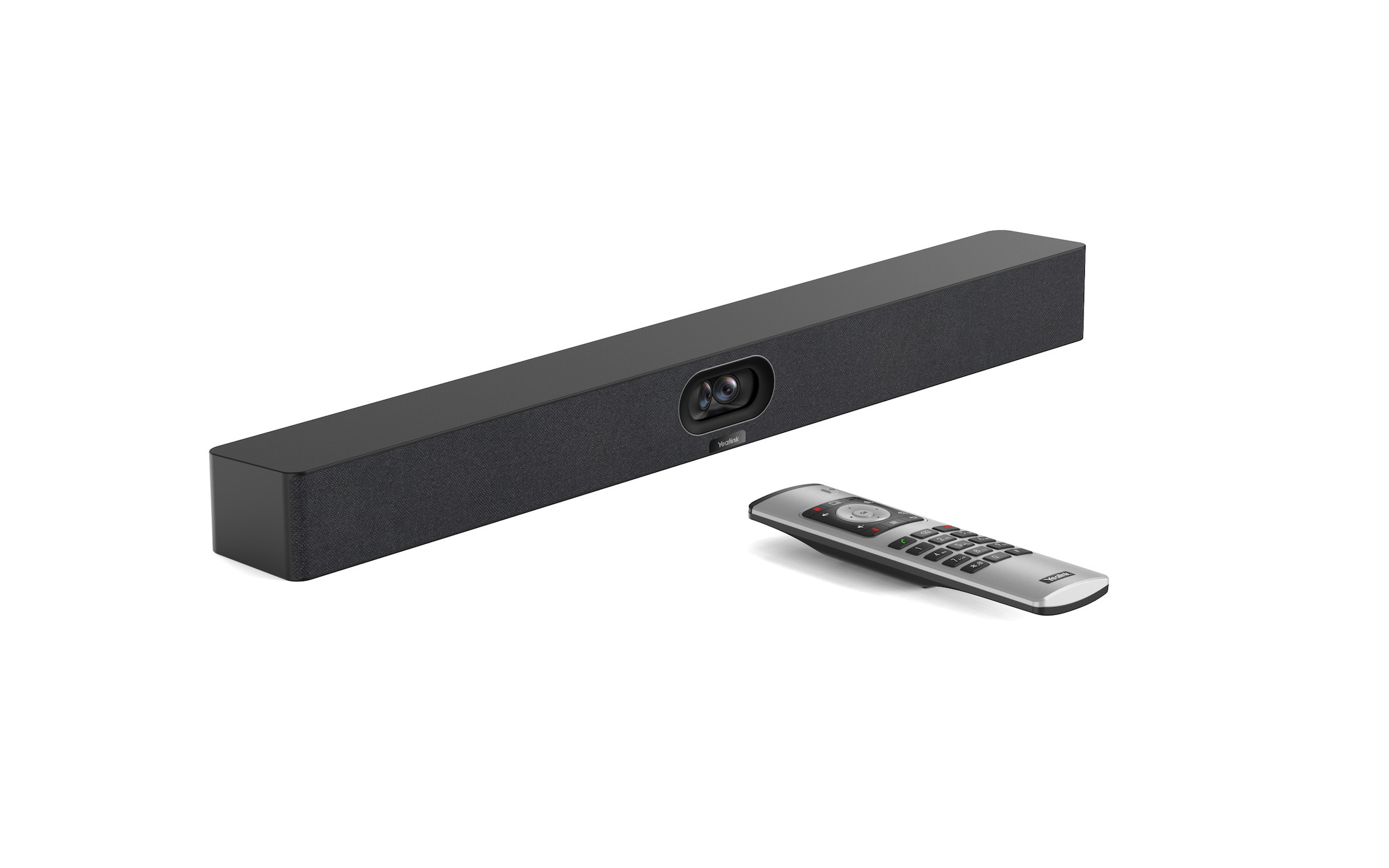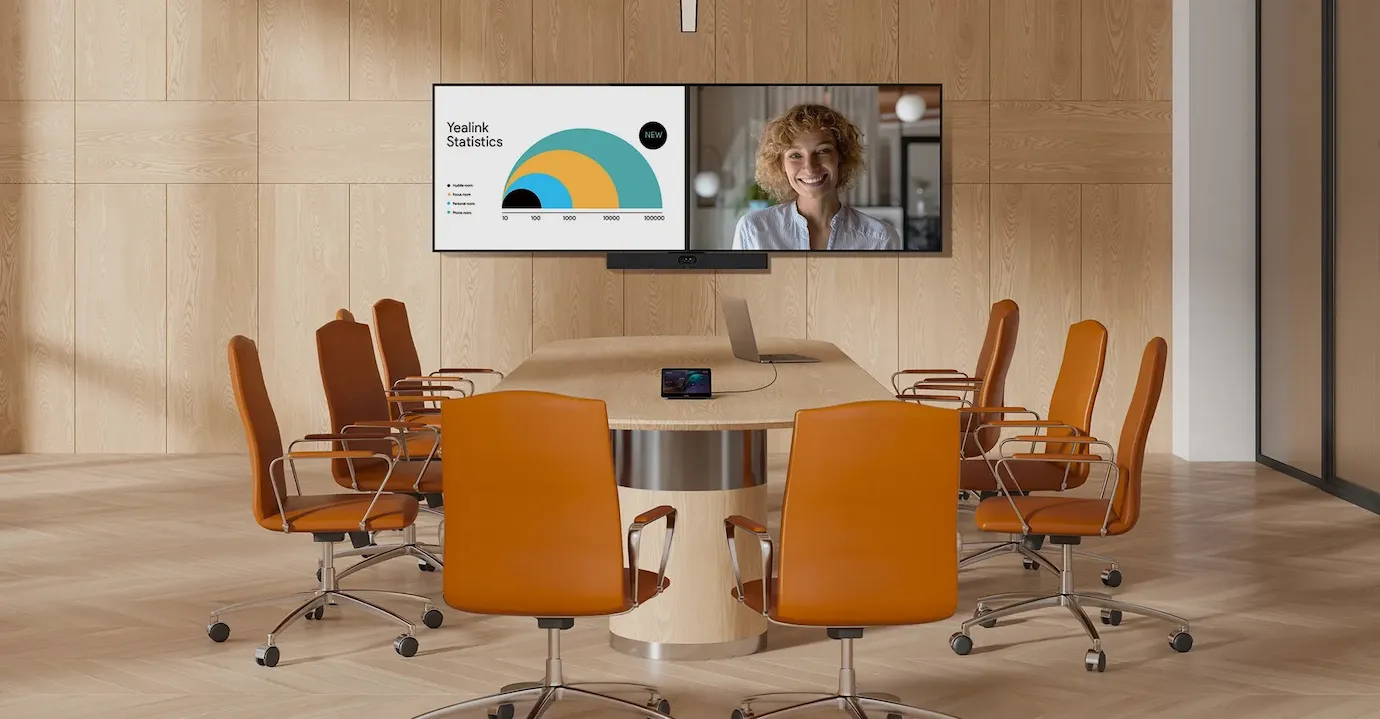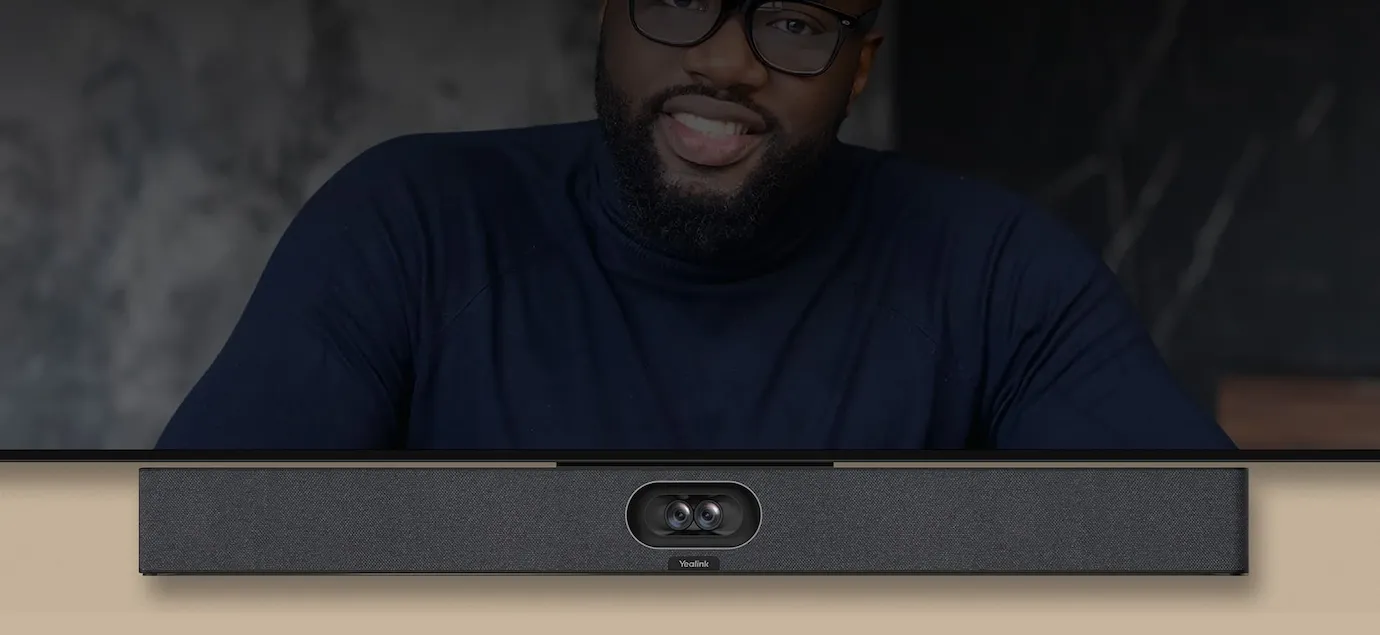

£1,825.20*
- Field of view 120°
- Focus type Manual & automatic focus


Product information

The Yealink MeetingBar A40 is a powerful all-in-one video conferencing solution for small to medium-sized conference rooms. Thanks to the combination of two 48MP cameras, it offers outstanding image quality and ensures clear and detailed presentations. With integrated speakers, an 8x MEMS microphone array and intelligent noise cancellation, it also ensures a first-class audio experience.
The technical data at a glance:
- Dual 48MP cameras for razor-sharp images
- Integrated speakers for clear sound
- 8x MEMS-Microphone array with intelligent noise cancellation
- 6 metre range for audio recording
- Android 13 operating system with future upgrades
- Microsoft MDEP compatibility for security and easier deployment
- 120° wide-angle view through dual cameras
- Remote device management and easy configuration
High image quality thanks to dual camera technology
The Yealink MeetingBar A40 combines the images from two fixed camera lenses to ensure ultra-high-resolution image quality. With a 120° wide-angle frame, the MeetingBar provides optimal visibility for all participants, regardless of their position in the room. This technology improves the display accuracy of presentations and ensures that even remote participants can see razor-sharp details. This enables better visual communication, especially in hybrid meetings.

Easy installation and remote management
The installation of the MeetingBar A40 is extremely simple thanks to the one-cable solution approach. A single Cat5e cable connection to the control console provides both power and network connectivity. In addition, the MeetingBar A40 supports remote management, allowing it to be configured, managed and updated remotely. These features make it an ideal solution for companies looking for a quick and efficient implementation.
Excellent audio quality for clear communication
The Yealink MeetingBar A40 impresses with a state-of-the-art 8x MEMS microphone arrayand intelligent noise reduction. This ensures that background noise is filtered out and speech intelligibility is improved. The recording range of up to 6 metres can be extended with additional microphones, making the MeetingBar ideal for medium-sized rooms. The integrated stereo speakers offer even and clear sound reproduction.
Compatible with various platforms
Thanks to its multi-platform compatibility, the MeetingBar A40 supports both Microsoft Teams and Zoom natively. In general mode, it also offers the option of using third-party apps via a USB-C connection. This flexibility allows the MeetingBar to be used in different environments and with different software solutions as required. Simple plug-and-play functions ensure that you can get started right away.
Security and future-proofing with Android 13
The Yealink MeetingBar A40 runs on the latest Android 13 operating system and is compatible with the Microsoft Device Ecosystem Platform (MDEP). This integration not only ensures simplified deployment, but also increased security. Regular software updates ensure that users always benefit from the latest functions and are protected against potential threats.
Technical data
| Name | Yealink A40 + VCR11 Video conferencing system, 48 MP, 60 fps, 120° |
|---|---|
| Article number | 1000033107 |
| GTIN/EAN | 6938818319981 |
| Manufacturer SKU | 1206675 |
| Model name | A40 + VCR11 |
| variant | with remote control |
| Brand | Yealink |
| Product Type | Video conferencing system |
| Frames per Second | 60 fps |
| Focus type | Manual & automatic focus |
| Operating system | Android |
| Camera resolution | 48 MP |
| Field of view | 120° |
| Inputs | 1x 3,5mm Jack , 1x Ethernet , 1x USB-A , 1x USB-B |
| Outputs | 1x 3,5mm Jack , 2x HDMI |
| Product width | 65 cm |
| Product height | 8 cm |
| Product depth | 6.2 cm |
| Weight | 5.54 kg |
| Colour | Black |
| Delivery contents | HDMI Cable , Remote control , mounting material |
| Condition | New |
| Warranty | 24 Month |
| Warranty type | Bringin service Service and support information |
Product safety
| Person responsible for the EU |
|---|
| ALSO Deutschland GmbH |
| Ernst-Heinkel-Str. 4 |
| 94315 Straubing |
| Germany |
| sales@yealink.com |



